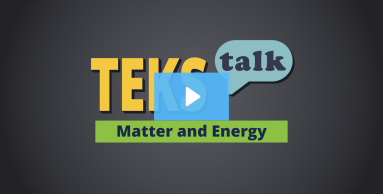
Knowledge and Skills Statement
The further explanation is designed to be a resource for educators that helps them better understand the topic their students are learning. Further explanations may be written at a more complex level than would be expected for students at the grade level.
The engineering design process (EDP) is a thinking process used to teach and apply concepts and skills in an integrated manner. Engineers study physical properties to determine the best building materials for their designs and prototypes.
Research
Ashbrook, Peggy. 2016. “The Early Years: Discovering Through Deconstruction.” Science and Children 53, no. 9 (Summer 2016): 22–23. http://www.jstor.org/stable/24721771.
Summary: In “Building with Sand,” students experiment with how combining materials can change their behavior. The author explains the importance of having students explore the properties of the materials separately before combining them. In this case, students were working with water and sand, so they were allowed to interact with both separately. Once the two are combined, students should discuss what they see and feel with their teacher and classmates. Students will likely quickly notice that wet sand acts differently than dry sand. To compare damp and dry sand, the students first attempted to build a tunnel or tower with the dry sand and discussed their challenges and how to solve them as a class. The class used magnifying glasses to closely observe dry sand as the water was added to it, allowing them to see that the sand now sticks together. Students then reattempted the challenge of building a structure with wet sand and observed how and why this worked better than using sand without added water.
Research
Mercier, Alison, Salem Metzger, Dearing Blankmann, and Heidi Carlone. 2019. “Can I Build on That?: Student-Engaged Talk Stems from Teachers’ Epistemological Messages.” Science and Children 57, no. 4 (November/December 2019):26–31. https://www.proquest.com/docview/2312780407?pq-origsite=gscholar&fromopenview=true&sourcetype=Scholarly%20Journals.
Summary: This article outlines different activities students can complete by observing other objects' physical properties. It also explains the importance of students engaging in conversation during these activities rather than learning passively. The article explains what types of questions teachers can ask to encourage conversation and ensure students are engaged. Students made tiles using different combinations of sand, clay, soil, and water for a design challenge. Students then conducted a “shake test” to test the stability of their designs. The teacher in this article asked questions to guide students in making observations about the physical properties of the items they were using.
